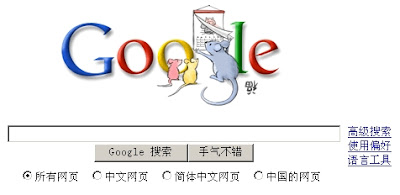Google build undersea cable
Google invests in transpacific cable
TO JOIN CONSORTIUM BUILDING A CABLE ACROSS THE PACIFIC
By John Boudreau
Mercury News (Copyright to the Mercury News)
Article Launched: 02/26/2008 01:34:51 AM PST
Google is joining a consortium to build a transpacific fiber-optic cable, evidence of the need for bandwidth to accommodate the explosive growth globally of Internet communications through text, voice and video.
The move, announced Monday, is the first time an Internet company has invested in an ocean-spanning cable, said Alan Mauldin, research director with Washington-based research firm TeleGeography.
"It shows that companies like Google are not just Web sites you go to," he said.
The 6,200-mile cable, expected to cost about $300 million, is being funded by six companies that, in addition to Google, include telecommunications companies Bharti Airtel in India and SingTel of Singapore, and Pacnet, a Hong Kong-based deep-sea fiber-optic cable network operator.
The announcement comes amid a boom in new cable construction and upgrades of existing lines, the largest expansion of fiber-optic systems since the dot-com bust, when too much cable capacity led to a market collapse and bankruptcy for fiber-optic network operators such as Global Crossing. Fiber-optic cable capacity across the Pacific is expected to increase 96 percent from 2007 through the end of this year, Mauldin said.
This time demand is driving the growth, said Bill Barney, chief executive of Pacnet, the largest investor in the consortium, dubbed Unity. In addition to the just-announced transpacific cable, which is expected to be completed by early 2010, three others
are being constructed or planned, including a line sponsored by Verizon, which should begin operating later this year, and another backed by a consortium that includes AT&T and telecommunications companies in Southeast Asia.
"A lot of the companies that are doing these things now are making money. We are making money. This isn't a business based on PowerPoint presentations and hype," said Barney, whose company has numerous Silicon Valley corporate clients and is owned by an investment group led by three private equity firms.
From 2002 to 2007, transpacific bandwidth demand soared an average of nearly 64 percent a year, according to TeleGeography research. And the firm expects the demand to double roughly every two years through 2013.
The need is driven by the dramatic increase in business and personal communications between the United States and Asia.
"The key driver is, of course, Silicon Valley," Barney said. "Everyone is connecting back to the West Coast of the United States. The U.S. is the e-commerce hub."
An earthquake off the coast of Taiwan in late December 2006 exposed the vulnerability of having too many cables laid along the same routes. The quake snapped a half-dozen or more deep-sea fiber-optic cable systems in the Luzon Strait, representing about 90 percent of the telecommunications capacity of the region. The costs of the ruptured cables were estimated in the billions of dollars in repairs and lost e-commerce.
The Unity cable will run along the ocean floor from Los Angeles to Chikura, Japan, dipping as deep as 2,000 feet below the surface. There, it will connect into other networks. Pacnet will control two of the five fiber pairs in the new cable.
A fiber is about the size of a single human hair. Each pair of fiber cables is capable of carrying up to 960 gigabytes per second, roughly the amount needed for 15 million simultaneous voice calls. The cable is expected to initially increase transpacific "lit" cable capacity by about 20 percent, and could potentially add up to 7.68 terabytes per second of bandwidth. A terabyte is 1,000 gigabytes, or 1 trillion bytes.
For Google, the consortium is an opportunity to lock in a low-cost price on some of the bandwidth it needs, Mauldin said. As Internet companies play larger roles in how people communicate - through activities such as social networking and online gaming - finding bandwidth capacity at the right price will become more critical, he said.
Mauldin said the ever-expanding appetite for bandwidth could one day lead Google and other Internet giants to form their own partnerships to build such communications infrastructure without a single dollar from a traditional telecom company.
"They are basically bandwidth hogs," Mauldin said.
Google invests in transpacific cable
TO JOIN CONSORTIUM BUILDING A CABLE ACROSS THE PACIFIC
By John Boudreau
Mercury News (Copyright to the Mercury News)
Article Launched: 02/26/2008 01:34:51 AM PST
Google is joining a consortium to build a transpacific fiber-optic cable, evidence of the need for bandwidth to accommodate the explosive growth globally of Internet communications through text, voice and video.
The move, announced Monday, is the first time an Internet company has invested in an ocean-spanning cable, said Alan Mauldin, research director with Washington-based research firm TeleGeography.
"It shows that companies like Google are not just Web sites you go to," he said.
The 6,200-mile cable, expected to cost about $300 million, is being funded by six companies that, in addition to Google, include telecommunications companies Bharti Airtel in India and SingTel of Singapore, and Pacnet, a Hong Kong-based deep-sea fiber-optic cable network operator.
The announcement comes amid a boom in new cable construction and upgrades of existing lines, the largest expansion of fiber-optic systems since the dot-com bust, when too much cable capacity led to a market collapse and bankruptcy for fiber-optic network operators such as Global Crossing. Fiber-optic cable capacity across the Pacific is expected to increase 96 percent from 2007 through the end of this year, Mauldin said.
This time demand is driving the growth, said Bill Barney, chief executive of Pacnet, the largest investor in the consortium, dubbed Unity. In addition to the just-announced transpacific cable, which is expected to be completed by early 2010, three others
are being constructed or planned, including a line sponsored by Verizon, which should begin operating later this year, and another backed by a consortium that includes AT&T and telecommunications companies in Southeast Asia.
"A lot of the companies that are doing these things now are making money. We are making money. This isn't a business based on PowerPoint presentations and hype," said Barney, whose company has numerous Silicon Valley corporate clients and is owned by an investment group led by three private equity firms.
From 2002 to 2007, transpacific bandwidth demand soared an average of nearly 64 percent a year, according to TeleGeography research. And the firm expects the demand to double roughly every two years through 2013.
The need is driven by the dramatic increase in business and personal communications between the United States and Asia.
"The key driver is, of course, Silicon Valley," Barney said. "Everyone is connecting back to the West Coast of the United States. The U.S. is the e-commerce hub."
An earthquake off the coast of Taiwan in late December 2006 exposed the vulnerability of having too many cables laid along the same routes. The quake snapped a half-dozen or more deep-sea fiber-optic cable systems in the Luzon Strait, representing about 90 percent of the telecommunications capacity of the region. The costs of the ruptured cables were estimated in the billions of dollars in repairs and lost e-commerce.
The Unity cable will run along the ocean floor from Los Angeles to Chikura, Japan, dipping as deep as 2,000 feet below the surface. There, it will connect into other networks. Pacnet will control two of the five fiber pairs in the new cable.
A fiber is about the size of a single human hair. Each pair of fiber cables is capable of carrying up to 960 gigabytes per second, roughly the amount needed for 15 million simultaneous voice calls. The cable is expected to initially increase transpacific "lit" cable capacity by about 20 percent, and could potentially add up to 7.68 terabytes per second of bandwidth. A terabyte is 1,000 gigabytes, or 1 trillion bytes.
For Google, the consortium is an opportunity to lock in a low-cost price on some of the bandwidth it needs, Mauldin said. As Internet companies play larger roles in how people communicate - through activities such as social networking and online gaming - finding bandwidth capacity at the right price will become more critical, he said.
Mauldin said the ever-expanding appetite for bandwidth could one day lead Google and other Internet giants to form their own partnerships to build such communications infrastructure without a single dollar from a traditional telecom company.
"They are basically bandwidth hogs," Mauldin said.
Labels: Google - Google News



 SehSeh
SehSeh tvbsidsation
tvbsidsation toomanysidesofme
toomanysidesofme 엄마곰 (ererliu)
엄마곰 (ererliu) 오늘도난 (wweom)
오늘도난 (wweom)








